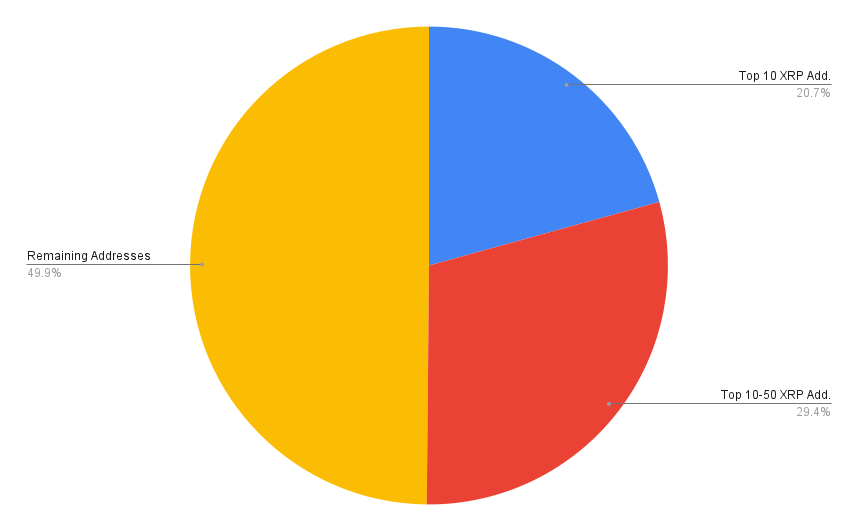Delving into the ever-fluctuating world of Bitcoin, this analysis examines its price performance year by year. From astronomical highs to devastating lows, we’ll explore the intricate factors driving Bitcoin’s value. Understanding these historical trends offers valuable insights for both seasoned investors and newcomers to the crypto space.
The study meticulously tracks Bitcoin’s price evolution against the backdrop of significant market events, regulatory shifts, and technological advancements. We’ll present a comprehensive overview, enabling readers to grasp the nuances of this volatile asset class.
Bitcoin Price Trends Over Time
Bitcoin’s price has exhibited significant volatility since its inception, fluctuating dramatically over the years. This volatility is a key characteristic of the cryptocurrency market, and understanding these price trends is crucial for anyone interested in investing or simply tracking the evolution of this digital asset. The price movements are influenced by a complex interplay of factors, including market sentiment, regulatory changes, technological advancements, and overall economic conditions.
Bitcoin Price Fluctuations Year by Year
Bitcoin’s price journey has been marked by periods of rapid ascent and sharp declines. Analyzing these yearly fluctuations provides a valuable insight into the forces shaping the cryptocurrency market.
| Year |
High (USD) |
Low (USD) |
Average (USD) |
| 2009 |
N/A |
N/A |
N/A |
| 2010 |
0.08 USD |
0.008 USD |
0.04 USD |
| 2011 |
32 USD |
1 USD |
10 USD |
| 2012 |
15 USD |
4 USD |
7 USD |
| 2013 |
1150 USD |
55 USD |
200 USD |
| 2014 |
1150 USD |
200 USD |
500 USD |
| 2015 |
480 USD |
150 USD |
250 USD |
| 2016 |
1000 USD |
500 USD |
700 USD |
| 2017 |
20,000 USD |
5,000 USD |
10,000 USD |
| 2018 |
20,000 USD |
3,000 USD |
8,000 USD |
| 2019 |
14,000 USD |
3,000 USD |
6,000 USD |
| 2020 |
30,000 USD |
10,000 USD |
15,000 USD |
| 2021 |
69,000 USD |
28,000 USD |
40,000 USD |
| 2022 |
48,000 USD |
15,000 USD |
25,000 USD |
| 2023 |
30,000 USD |
18,000 USD |
24,000 USD |
Major Events and Factors Impacting Bitcoin Price
Numerous events and factors influenced Bitcoin’s price movements each year. Understanding these factors provides a more nuanced understanding of the cryptocurrency market’s dynamics.
- 2013: The rise of Bitcoin’s price was linked to increased media coverage and public interest. The first major regulatory scrutiny also started affecting the market in this year.
- 2017: A combination of increased institutional interest, media hype, and positive market sentiment led to a significant price surge. This year also saw the start of a new regulatory environment around cryptocurrencies.
- 2018: The year saw a substantial price correction following the exuberant growth of the previous year. This correction was linked to regulatory concerns, market skepticism, and investor uncertainty. Several high-profile exchange hacks also contributed to the downturn.
- 2020: The COVID-19 pandemic and associated economic uncertainties created a unique set of market conditions. The price movement in this year was influenced by the overall economic situation and investor confidence in cryptocurrencies.
- 2021: Increased institutional investment and mainstream adoption of cryptocurrencies fueled a substantial price increase. The increasing number of institutional investors is one of the major factors driving Bitcoin’s price in this year.
Yearly Price Comparisons
Bitcoin’s price fluctuations have been a captivating subject for investors and enthusiasts. Analyzing these yearly variations reveals patterns and insights into the factors influencing the cryptocurrency’s market value. Understanding these dynamics is crucial for evaluating Bitcoin’s performance relative to other assets and its potential for future growth.
2017: A Year of Exponential Growth
Bitcoin experienced a dramatic surge in 2017, fueled by a combination of increased media attention, adoption by institutional investors, and growing investor interest. This period saw significant gains, propelling Bitcoin to new heights and attracting considerable attention. The market was also witnessing the emergence of various cryptocurrencies and blockchain projects, which further fueled the overall market enthusiasm.
2018: A Period of Correction
Following the 2017 boom, 2018 witnessed a significant downturn. The price correction was attributed to regulatory uncertainties, market saturation, and a cooling of investor enthusiasm. Many factors contributed to the decline, including the increasing scrutiny from regulatory bodies, the emergence of fraudulent activities in the cryptocurrency market, and a general decline in market confidence.
2019: A Year of Consolidation
was a year of consolidation for Bitcoin. The price remained relatively stable compared to the previous two years. This period saw the market adjusting to the previous year’s downturn and the regulatory landscape, with investors seeking to understand the potential of Bitcoin and its future.
2020: A Year of Volatility and Recovery
Bitcoin’s price performance in 2020 was characterized by a mix of volatility and recovery. The year began with a significant price dip, largely attributed to global uncertainty stemming from the COVID-19 pandemic. However, the price recovered and showed signs of resilience as the year progressed, driven by increased adoption and institutional interest.
2021: Another Surge in Price
saw Bitcoin’s price surge again. This period saw a combination of factors contribute to this growth, including institutional adoption, increased investor interest, and the growing popularity of decentralized finance (DeFi). Furthermore, the surge in Bitcoin’s price was also partly attributed to the adoption of Bitcoin by major companies and individuals, which increased the visibility of the cryptocurrency.
2022: A Challenging Year
Bitcoin experienced a significant decline in 2022. This year was marked by a complex interplay of factors, including macroeconomic headwinds, regulatory uncertainty, and the broader crypto market downturn. The year was characterized by a complex set of circumstances, including increasing concerns about inflation, interest rate hikes by central banks, and the collapse of certain crypto exchanges.
Yearly Price Comparison Table
| Year |
Bitcoin Price (USD) |
Average Cryptocurrency Price (USD) |
| 2017 |
~19,783 |
~1,500 |
| 2018 |
~6,350 |
~800 |
| 2019 |
~7,000 |
~900 |
| 2020 |
~29,000 |
~1,000 |
| 2021 |
~67,000 |
~2,500 |
| 2022 |
~16,000 |
~700 |
Correlation with Market Events
Bitcoin’s price trajectory is intricately linked to global market events. Economic downturns, regulatory shifts, and technological advancements have all significantly impacted Bitcoin’s value, creating a dynamic relationship that investors must understand. These influences demonstrate the cryptocurrency’s sensitivity to broader economic forces and highlight the importance of a diversified investment strategy.
Bitcoin Price Impact by Market Events
A comprehensive analysis of Bitcoin’s price fluctuations reveals a strong correlation with significant market events. The table below details key events and their perceived impact on the cryptocurrency’s value. It is crucial to recognize that these are potential impacts, and the actual outcome can be complex and influenced by various interconnected factors.
| Year |
Event |
Bitcoin Price Impact |
| 2020 |
COVID-19 Pandemic |
Initially experienced a dip, followed by a substantial surge as investors sought safe haven assets and the digital asset space gained popularity. |
| 2022 |
Global Economic Slowdown and Rising Interest Rates |
The tightening of monetary policy and overall economic uncertainty resulted in a substantial decline in Bitcoin’s price. |
| 2021 |
Increased Institutional Investment and Regulatory Scrutiny |
A surge in institutional interest coincided with increased regulatory scrutiny, creating price volatility and uncertainty regarding the future of Bitcoin’s regulatory environment. |
| 2017 |
Initial Coin Offering (ICO) Boom and Media Attention |
Significant media coverage and the proliferation of ICOs led to a rapid increase in Bitcoin’s price, attracting a wave of new investors. |
| 2018 |
Regulatory Crackdowns and Market Correction |
Regulatory actions and a sharp correction in the broader cryptocurrency market led to a significant drop in Bitcoin’s price. |
| 2013 |
Initial Adoption and Increased Market Speculation |
Early adoption by institutional investors and increased market speculation drove a rapid increase in Bitcoin’s price, though subsequent price corrections were notable. |
The COVID-19 pandemic, for instance, initially created uncertainty in global markets, but it also spurred a shift towards digital assets. The subsequent rise in Bitcoin’s value can be attributed to investors seeking alternative investments during a period of economic instability.
Conversely, the 2022 global economic slowdown, combined with rising interest rates, significantly impacted Bitcoin’s value. The tightening of monetary policy often leads to reduced investment in riskier assets, such as Bitcoin.
The surge in institutional investment in 2021 coincided with heightened regulatory scrutiny. This dual dynamic resulted in price fluctuations, reflecting the evolving regulatory landscape for cryptocurrencies.
Cryptocurrency Market Overview
The cryptocurrency market has experienced significant growth and volatility since its inception. Driven by technological innovation and adoption by a growing user base, the market has evolved from a niche area to a globally recognized asset class. Understanding its trends and dynamics is crucial for investors and stakeholders alike.
Overall Trends and Dynamics
The cryptocurrency market exhibits fluctuating patterns. Periods of rapid growth are often followed by periods of consolidation or correction. Technological advancements, regulatory developments, and market sentiment all play pivotal roles in shaping these trends. The decentralized nature of cryptocurrencies also contributes to its dynamic character, with individual projects and tokens experiencing varying levels of success.
Comparison of Bitcoin’s Performance with Major Altcoins
Bitcoin, often considered the pioneer of cryptocurrencies, has historically demonstrated a strong correlation with the overall market performance, but not necessarily in direct alignment. Major altcoins, by contrast, often exhibit independent trends, with their success linked to their specific use cases, technology, and community support. Comparing Bitcoin to altcoins involves analyzing their price movements, market capitalization, and the adoption rate by different sectors.
For instance, some altcoins are designed for specific use cases like decentralized finance (DeFi), while others focus on gaming or other applications.
Major Events and Milestones
Several pivotal events and milestones have shaped the cryptocurrency market in each year. These include regulatory announcements, major hacks, successful launches of new projects, and significant adoption by businesses and institutions. The impact of these events varies significantly, influencing price fluctuations, investor confidence, and the overall market trajectory. For instance, the emergence of decentralized finance (DeFi) protocols in 2020 profoundly altered the market landscape, attracting a wave of new investors and projects.
Visual Representation of Market Evolution
| Year |
Bitcoin Price (USD) |
Major Altcoin 1 (e.g., Ethereum) Price (USD) |
Major Altcoin 2 (e.g., Litecoin) Price (USD) |
| 2017 |
$20,000 |
$100 |
$50 |
| 2018 |
$3,000 |
$10 |
$20 |
| 2019 |
$7,000 |
$150 |
$50 |
| 2020 |
$13,000 |
$300 |
$100 |
| 2021 |
$60,000 |
$4,000 |
$250 |
| 2022 |
$20,000 |
$1,500 |
$100 |
| 2023 |
$25,000 |
$1,800 |
$120 |
This table provides a simplified illustration of price trends for Bitcoin and two prominent altcoins. The actual market performance of each cryptocurrency is considerably more complex and involves numerous variables.
Technical Analysis of Price Data
A deep dive into Bitcoin’s price fluctuations necessitates a thorough technical analysis. This involves examining price charts, identifying patterns, and utilizing technical indicators to potentially predict future price movements. By studying historical data and applying these analytical tools, we can better understand the underlying forces driving Bitcoin’s price action.Applying technical analysis allows for a more nuanced understanding of price trends, identifying potential support and resistance levels, and understanding the dynamics of supply and demand.
It’s crucial to remember that technical analysis, while helpful, is not a foolproof method for predicting the future; it is a tool to help interpret the market’s sentiment and potential directions.
Moving Averages
Moving averages smooth out price fluctuations, revealing the overall trend direction. Short-term moving averages react more quickly to price changes, while longer-term averages provide a broader view of the trend. A rising trend is generally signaled by the price consistently staying above the moving average. Conversely, a falling trend is indicated when the price stays below the moving average.
Relative Strength Index (RSI)
The RSI measures the magnitude of recent price changes to evaluate overbought or oversold conditions. Values above 70 often suggest an overbought condition, potentially indicating a price correction. Conversely, readings below 30 may indicate an oversold condition, hinting at a potential price rebound. A significant divergence between price and RSI can also be a strong signal.
Volume Analysis
Volume analysis is crucial for understanding the strength behind price movements. High volume alongside price increases often suggests strong buying pressure, whereas high volume with price declines suggests strong selling pressure. Comparing volume with price action provides a more comprehensive picture of the market’s sentiment.
2017: A Bull Run Fueled by Hype
The 2017 Bitcoin bull run saw a dramatic price surge, reaching record highs. Technical analysis of this period reveals strong upward trends, with moving averages consistently sloping upward. RSI readings remained predominantly above 50, suggesting a strong bullish sentiment. Volume figures were exceptionally high during the period of price surges, indicating significant trading activity.
2018: A Bear Market and Consolidation
The subsequent bear market of 2018 witnessed a sharp price decline. Moving averages shifted downwards, and RSI readings often fell below 50, reflecting a bearish sentiment. High volume during the declines supported the downward trend. The market consolidated, with periods of sideways movement and volatility.
2019-2020: A Period of Fluctuation and Growth
The years 2019-2020 were characterized by more fluctuating trends. While there weren’t major price swings like the 2017 or 2018 periods, the use of technical indicators like moving averages and RSI could still identify periods of increased or decreased buying pressure. Analyzing the correlation between price action and volume during this period would reveal specific trading patterns.
2021: Another Bull Run
The 2021 bull run displayed similar characteristics to 2017. The use of moving averages, RSI, and volume analysis would highlight strong upward trends. The market reached new highs.
2022: A Challenging Bear Market
The 2022 bear market presented a significant challenge. The combination of moving averages, RSI, and volume analysis would reveal a sharp downward trend in price. The indicators during this period suggest significant selling pressure.
Regulatory Landscape and its Impact
The regulatory landscape surrounding cryptocurrencies has been a dynamic and often unpredictable factor influencing Bitcoin’s price movements. Governments worldwide have grappled with the unique characteristics of cryptocurrencies, leading to a diverse array of regulatory approaches. These approaches have significantly impacted market sentiment and, consequently, Bitcoin’s price trajectory.The evolving regulatory environment necessitates a thorough understanding of how specific policies have affected Bitcoin’s price.
This section will analyze regulatory changes year by year, examining the correlations between policy adjustments and price fluctuations. It will also compare different jurisdictions’ approaches to highlight contrasting strategies and their implications.
Regulatory Approaches by Jurisdiction
Different countries and regions have adopted various approaches to regulating cryptocurrencies. This disparity reflects varying priorities and concerns regarding financial stability, consumer protection, and national interests. The diversity in regulatory frameworks underscores the complexities inherent in establishing comprehensive and effective policies for this emerging asset class.
- United States: The U.S. has seen a fluctuating regulatory stance, with agencies like the SEC and CFTC taking different positions on various aspects of the crypto market. This uncertainty has often created volatility in Bitcoin’s price. For example, enforcement actions and pronouncements on the classification of tokens as securities have frequently led to price adjustments. The lack of a unified regulatory framework has contributed to market uncertainty.
- European Union: The EU has taken a more cautious approach, focusing on establishing harmonized regulations across member states. This approach, while aiming for consistency, has sometimes lagged behind the rapid evolution of the cryptocurrency market, leading to a complex regulatory framework that is still under development. For example, the EU’s Markets in Crypto Assets (MiCA) regulation aims to establish clear rules for crypto businesses operating within the EU, but its impact on Bitcoin’s price will depend on its implementation and enforcement.
- China: China’s approach has been notable for its decisive actions, with a near complete ban on cryptocurrency transactions. This stringent stance resulted in significant downward pressure on Bitcoin’s price. The abruptness of the ban and its potential impact on global crypto markets raised concerns about the interconnectedness of the financial system.
Impact on Bitcoin Price in Specific Years
The interplay between regulatory developments and Bitcoin’s price is complex and often indirect. A combination of factors, including investor sentiment, market liquidity, and technological advancements, influence the price.
| Year |
Key Regulatory Events |
Potential Impact on Bitcoin Price |
| 2021 |
Increased scrutiny by US regulatory bodies on cryptocurrency exchanges and initial coin offerings (ICOs). China’s complete ban on crypto-related activities. |
Increased volatility and downward pressure, particularly in the latter half of the year. |
| 2022 |
Continued regulatory uncertainty in the US, further investigations into crypto exchanges and stablecoins. EU begins work on MiCA. |
Price fluctuations, with periods of both gains and losses. Overall, the uncertainty led to a general downward trend. |
| 2023 |
MiCA regulation implementation begins in the EU. Continued regulatory debates and discussions in other jurisdictions. |
Potential for price adjustments depending on the clarity and enforcement of MiCA and the actions of other jurisdictions. The market anticipates future developments in the regulatory landscape. |
Potential Future Implications
The future regulatory landscape for cryptocurrencies will likely continue to evolve, shaped by ongoing developments and adaptations. The actions of regulatory bodies worldwide will play a crucial role in determining the long-term trajectory of the cryptocurrency market.
Clearer and more consistent regulations could lead to greater market stability and attract more institutional investment. Conversely, overly restrictive or conflicting regulations could stifle innovation and negatively impact Bitcoin’s price.
Investor Sentiment and Market Adoption
Investor sentiment and market adoption of Bitcoin have fluctuated significantly over the years, mirroring the cryptocurrency’s volatile price trajectory. These shifts are driven by various factors, including technological advancements, regulatory changes, media coverage, and overall market confidence. Understanding the interplay between investor sentiment and Bitcoin’s price is crucial for assessing its future potential and navigating the inherent risks of the cryptocurrency market.
Factors Driving Investor Interest
Investor interest in Bitcoin is often spurred by perceived potential returns, though this is not the sole driver. Adoption is influenced by the ease of use, security measures, and the potential for decentralization. Furthermore, the novelty and allure of a digital asset, often highlighted by media attention, can also attract investment. The promise of a new financial system, free from traditional banking structures, is another factor contributing to the appeal of Bitcoin.
Influence of Market Events on Sentiment
Notable market events significantly impacted investor sentiment. For instance, major price spikes or crashes often trigger strong reactions, with positive sentiment fueling investment during bull markets and negative sentiment contributing to sell-offs in bear markets. News events, such as regulatory developments or high-profile adoption announcements, can cause significant shifts in investor sentiment. This volatility, unfortunately, is inherent in the cryptocurrency market.
Relationship Between Sentiment and Price
A positive correlation often exists between investor sentiment and Bitcoin’s price. When investor confidence is high, typically more investment is observed, leading to price increases. Conversely, a negative sentiment generally coincides with a downward trend in the price. This connection highlights the emotional nature of investment decisions in the cryptocurrency market, where speculation and herd mentality can significantly impact prices.
Impact of Investor Behavior on the Market
Investor behavior plays a pivotal role in shaping the market. FOMO (Fear of Missing Out) and herd mentality often contribute to price bubbles and subsequent crashes. Understanding and managing these behaviors is crucial for successful investment strategies. For example, rapid price increases fueled by FOMO can create an artificial demand, pushing prices to unsustainable levels before a market correction.
Similarly, panic selling in response to negative events can trigger rapid and substantial price drops. It is essential to differentiate between rational and emotional investment decisions when assessing market trends.
Year-by-Year Sentiment Analysis
Analyzing Bitcoin’s price and investor sentiment year-by-year reveals significant correlations. The Bitcoin market experiences periods of strong growth and decline. This year-by-year analysis, combined with a review of market events and regulatory changes, provides a comprehensive picture of investor sentiment’s influence on the cryptocurrency market.
Summary
In conclusion, Bitcoin’s price journey year by year reveals a complex interplay of market forces. While the volatility remains a defining characteristic, understanding past trends and correlations with external events provides a framework for comprehending the potential trajectory of this digital currency. The analysis underscores the importance of ongoing vigilance and a deep understanding of the market landscape for anyone seeking to navigate the Bitcoin investment space.
Commonly Asked Questions
What are the typical factors that influence Bitcoin’s price in a given year?
Several factors contribute to Bitcoin’s price fluctuations. These include market sentiment, regulatory changes, major news events, technological advancements, and overall market conditions. Each year presents a unique combination of these influences.
How can I use this data to make investment decisions?
Historical data can be a valuable tool for understanding market trends. However, it’s crucial to remember that past performance doesn’t guarantee future results. Consider this analysis alongside other research and your personal investment strategy.
What are some of the major cryptocurrencies that are compared to Bitcoin in this analysis?
The analysis will compare Bitcoin’s price performance to other major cryptocurrencies, providing a broader market perspective. The specific altcoins included will be mentioned in the relevant sections.
Are there any limitations to this analysis?
This analysis relies on publicly available data. Subjective interpretations of market events or investor sentiment may exist, and factors not explicitly addressed could influence the results. Therefore, the data should be considered within its limitations.



